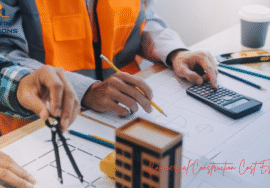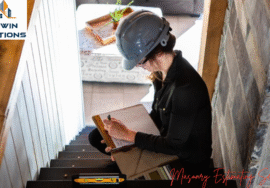
7 Ways to Choose the Right Construction Materials
Every building starts with a decision. What will you build it with? Choosing the right construction materials is not just about price or looks. It’s about strength, safety, longevity, and cost-effectiveness. One poor choice can lead to delays, damage, or even disaster.
Whether you’re planning a residential build or a large commercial project, the materials you select matter. They affect everything—from construction estimating to long-term performance. Let’s explore seven key ways to choose the best materials for your next job.
-
Understand the Project Requirements
Start with the basics. What type of project are you working on? A private home? A hospital? A warehouse? Each job has its own needs.
A family house may focus on comfort and style. A commercial site may demand fire resistance, load-bearing strength, or industrial-grade surfaces.
Look at the structure’s purpose. Consider the climate, local regulations, and building codes. For instance, projects in cold climates may need materials with better insulation.
If you’re working on structural walls, accurate steel estimating and concrete estimating plans are critical. For interior fit-outs, you’ll rely more on drywall estimating and painting estimating strategies. Always align materials with function.
-
Balance Cost and Quality

Budget matters. But cheap materials often cost more in the long run. Think of lifespan, maintenance, and repair costs.
Good construction estimating includes both upfront and long-term values. Let’s say you choose cheaper timber for framing. If it warps in two years, you’ll pay more to fix it.
That’s why a lumber estimating plan should include not just price per unit, but grade, treatment, and durability.
The same applies to pipes, cables, and finishes. Furthermore, plumbing and electrical estimating strategies must factor in wear resistance. Choose materials that last—not just those that save money now.
-
Check Durability and Performance
Can your material stand up to time, weather, or stress? That’s the real question.
Steel lasts decades. So does reinforced concrete. Treated timber can survive pests and rot. But not all materials are equal.
Your concrete estimating plan should reflect not just quantity, but type. Will you need high-strength concrete? Will it be exposed to moisture or salt? These factors matter.
When estimating HVAC ducts or systems, make sure the materials resist corrosion. Poor ventilation materials may degrade quickly under pressure. You should include all technical details when HVAC estimating.
Durability means fewer repairs, less waste, and happier clients.
-
Consider Ease of Installation
Some materials are harder to work with. Heavy blocks, fragile tiles, or awkward fittings take more time and labor.
Time is money. Complex materials increase labor costs and delay progress. In construction estimation, labor is one of the biggest costs.
Drywall estimating, for example, must include time for hanging, taping, and finishing. Choose boards that are easy to cut and install. This saves effort and reduces errors.
The same goes for painting estimating plans. Some paints cover better with one coat. Others need three. The right choice saves time and resources. If materials are hard to install, they may lead to more waste. And that hurts your budget.
-
Assess Local Availability
Before falling in love with a material, make sure you can get it. Imported or rare materials may be costly or face delays. Check suppliers. Talk to local vendors. Ask if your chosen products are in stock.
While construction estimating, you should always consider supply timelines. Delayed materials slow down every part of the job.
For example, if your plumbing estimating plan includes a rare copper fitting, and it’s delayed, everything behind it stops. You may have to reorder or redesign.
Staying on local material can help you. Locally sourced construction materials are cheaper to transport, arrive faster, and often support local standards.
-
Prioritise Safety and Compliance
Some materials are safer than others. Fire-resistant panels, low-emission paints, or non-toxic pipes protect users and workers alike.
Always check safety standards. Don’t use outdated materials just because they’re cheap.
In commercial jobs, safety compliance is strict. Your steel estimating plan might include fireproof coatings. When doing electrical estimating then it may require flame-retardant cables.
Regulations change by region. Always check local codes before buying. Failing safety checks can halt work and cause major fines.
Smart builders choose materials that pass every test—structural, safety, and environmental.
-
Think About Sustainability
Green building is not just a trend. It’s a necessity. Clients want sustainable buildings. Cities want lower carbon footprints.
Materials make a difference. Recycled steel, low-VOC paints, bamboo flooring, and energy-efficient windows are great examples.
Choose materials that reduce waste and use less energy. Even HVAC estimating now includes energy-efficient systems.
Sustainable construction materials may cost more upfront. But they save money long-term—through energy savings, better indoor air, and longer life.
For public projects or certifications like BREEAM or LEED, eco-friendly materials may be required.
By choosing sustainable options now, you stay ahead of the curve.
The Role of Estimating in Material Choice

Estimating is the silent force behind every successful build. Without accurate construction estimation, you can’t make smart material choices.
Let’s break it down:
- Concrete estimating helps decide the right mix, grade, and quantity.
- Steel estimating ensures structural needs are met without overspending.
- Lumber estimating shows if higher-grade timber fits your budget.
- Plumbing estimating helps select pipe types, valves, and fixtures.
- Electrical estimating checks compatibility with codes and safety standards.
- HVAC estimating finds the right balance between cost, performance, and efficiency.
- Drywall estimating tracks thickness, quantity, and insulation needs.
- Painting estimating ensures coverage, finish type, and drying time are all accounted for.
Material selection doesn’t happen in a vacuum. It’s tied to time, money, function, and design. That’s why estimators and project managers must work closely.
The Bottom Lines
Choosing the right construction materials isn’t just a technical task. It’s a strategic decision. One that affects the success, safety, and lifespan of every building.
Follow these seven steps, and you’ll avoid the most common mistakes.
- Know the job’s needs.
- Choose balance over cheap.
- Pick strong, proven materials.
- Please keep it simple to install.
- Source locally when you can.
- Stay safe and meet codes.
- Think ahead for the planet.
And always let your construction estimating guide your decisions. With the right materials, every project starts strong—and finishes even stronger.









